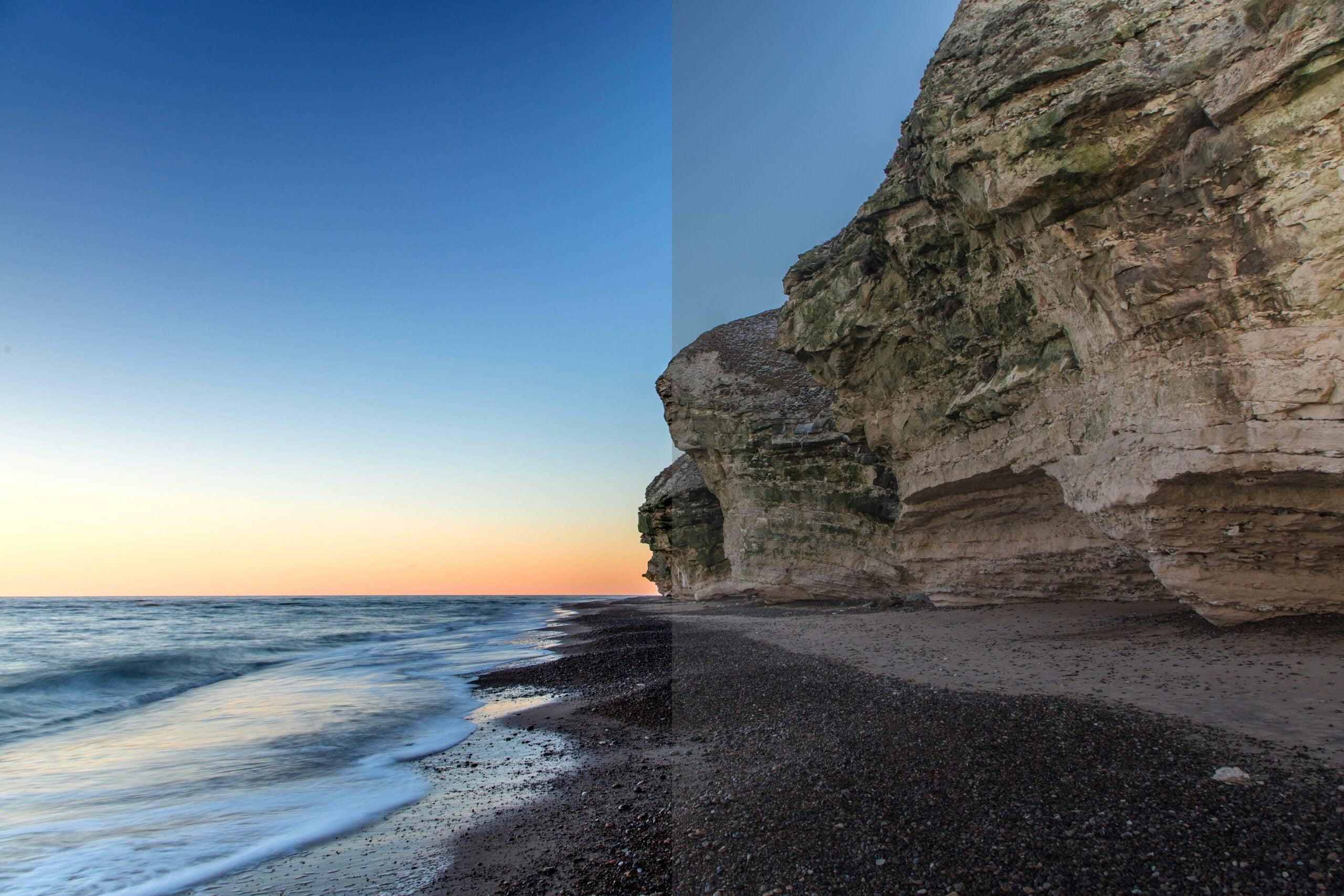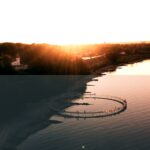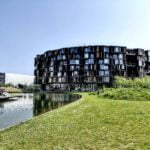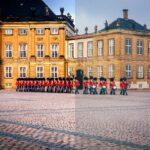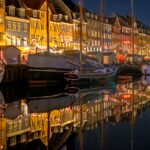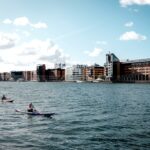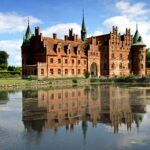Are you ready to uncover the delightful secrets of Denmark? Get ready to be amazed as we delve into the fascinating world of one of the happiest countries on Earth. But that’s not all – did you know that the Danish language has no word for “please”? It’s just one of the many intriguing fun facts we’ll be exploring in this article. So, buckle up and prepare to embark on a journey of discovery as we unveil ten captivating tidbits that will leave you astounded by Denmark’s unique charm and cultural wonders. Get ready to be enthralled!
Fun Facts About Denmark
Denmark, the charming country located in Northern Europe, is filled with delightful secrets that will surely amaze you. From its rich history to its unique traditions, there’s always something intriguing to discover. So, let’s dive right in and uncover some fascinating fun facts about Denmark that will leave you in awe!
Fact 1: The Oldest Kingdom in Europe
Denmark proudly holds the title of being the oldest kingdom in Europe. Its royal history dates back over a thousand years, making it a captivating destination for history enthusiasts. But did you know that Denmark also boasts the oldest flag in the world? Known as the Dannebrog, this distinctive red and white flag has been waving proudly since the 13th century, symbolizing the country’s unity and resilience. It’s a true testament to Denmark’s enduring spirit and rich cultural heritage.
“Denmark’s age-old monarchy and the iconic Dannebrog flag are timeless reminders of the country’s historical significance.”
Fact 2: An Archipelago of Enchanting Islands
Denmark is not just a single landmass; it’s an archipelago of more than 100 islands, each with its own unique character and allure. Imagine hopping from one enchanting island to another, unveiling hidden gems and picturesque landscapes. Some of these islands are uninhabited, creating havens of untouched natural beauty. So, if you’re seeking an escape from the hustle and bustle, Denmark’s islands offer tranquility and breathtaking views that will take your breath away.
“Denmark’s archipelago is like a treasure trove of islands, waiting to be explored and admired. Each one holds a different story and beauty of its own.”
Fact 3: A Nation of Cyclists
Denmark is a true haven for cyclists, with more than twice the number of bicycles than cars. The Danish people have embraced cycling as an integral part of their lifestyle, prioritizing sustainability and well-being. Just picture the streets of Copenhagen, bustling with cyclists heading to work, school, or leisurely exploring the city. This cycling culture not only promotes a healthier lifestyle but also contributes to Denmark’s eco-friendly reputation.
“In Denmark, hopping on a bicycle is more than just a mode of transport; it’s a way of life. Joining the vibrant sea of cyclists is like entering a world fueled by pedal power and a touch of Danish charm.”
Fact 4: Hygge, the Danish Coziness
Step into Denmark, and you’ll experience the warm embrace of hygge (pronounced hoo-ga). This uniquely Danish concept embodies coziness, contentment, and a sense of well-being. Danish people cherish hygge, creating inviting spaces filled with soft blankets, warm candlelight, and quality time spent with loved ones. It’s all about finding joy in simple pleasures, like sipping a cup of hot cocoa by the fireplace or enjoying a leisurely evening with friends. Embracing hygge is like embracing a sense of pure comfort and happiness.
“Denmark’s love for hygge is like a warm hug that wraps you in tranquility and contentment. It’s a reminder to slow down, savor the present moment, and appreciate life’s little pleasures.”
Fact 5: A Danish Santa Claus with a Twist
While Santa Claus is widely recognized as a jolly old man residing in the North Pole, Denmark has its own version of this beloved figure. Meet Julenisse, the Danish Santa Claus who resides in Greenland. Instead of delivering gifts on Christmas Eve like his North Pole counterpart, Julenisse brings presents to Danish children on December 24th. With his long white beard, red hat, and cheerful spirit, Julenisse adds an enchanting touch to Denmark’s Christmas traditions.
“Denmark’s Julenisse brings a touch of magic to Christmas, spreading joy and delight as he delivers gifts to eager children. It’s a Scandinavian twist that adds to the country’s festive charm.”
Fact 6: High Standard of Living and Child Benefits
Denmark consistently ranks among the countries with the highest standard of living, and it’s no wonder why. Danish people enjoy a well-designed welfare system that ensures the well-being and prosperity of its citizens. One remarkable aspect is the substantial child benefits provided to families. Each year, Danish parents receive over $1,500 for each child under 18 years old, helping to alleviate financial burdens and nurture a supportive environment for the younger generation.
“Denmark’s commitment to its citizens goes beyond providing a high standard of living; it extends to ensuring that families receive the support they need to thrive. It’s a testament to the country’s dedication to the well-being of its people.”
As we wrap up our journey through Denmark’s delightful secrets, these fun facts have given us a glimpse into the country’s rich history, vibrant traditions, and high quality of life. From the oldest kingdom in Europe to the cozy concept of hygge, Denmark presents a tapestry of captivating stories waiting to be discovered. So, pack your bags, embrace the Danish spirit, and embark on an adventure to unravel even more of Denmark’s enchanting wonders.
Fun facts about Denmark are always an interesting way to learn more about this fascinating country. Did you know that there are 10 fun facts about Denmark that will leave you amazed? From their stunning landscapes to their innovative design, Denmark has so much to offer. If you’re curious to know these fun facts, click here: 10 Fun Facts About Denmark. Alternatively, if you’re hungry for even more knowledge, we’ve got you covered with 40 additional facts about Denmark. Click here to uncover these intriguing details. And that’s not all, we’ve also got a whopping 100 facts about Denmark waiting for you to explore. Discover even more fascinating information by clicking here. Hungry for more? How about diving into 5 interesting facts about Denmark that will surprise you? Click here to feed your curiosity. Still want more? Great! Take a leap and explore 101 amazing facts about Denmark by clicking here. Are you a food lover? Then, we bet you’ll be mesmerized by the fun facts about Denmark food. Click here to tantalize your taste buds with Denmark’s culinary delights. Lastly, for those who love a good scare, we’ve even got scary facts about Denmark that will send chills down your spine. Ready to be spooked? Click here if you dare. Get ready to embark on a journey of discovery with these captivating facts about Denmark!
One of the happiest countries in the world
Denmark, a small Scandinavian country nestled between Germany and Sweden, has gained a reputation as one of the happiest countries in the world. But what makes Denmark such a delightful place to live? Let’s uncover some fun facts that will amaze you and shed light on the secret to Danish happiness!
1. Danish Happiness – A Recipe for Success
Denmark consistently ranks among the happiest countries in the world, trailing only behind its Scandinavian neighbor, Finland. But what makes Danes so content? One ingredient in the recipe for Danish happiness is social equality. Denmark is known for its strong welfare state, ensuring fair access to education, healthcare, and social services. This commitment to social welfare creates an inclusive and supportive society, fostering a sense of well-being and contentment among its citizens. As Danish society thrives on a sense of equality, it’s no wonder happiness permeates the air!
“In Denmark, happiness is a collective endeavor where no one is left behind.”
2. Viking Legends and Incredible History
Ah, the Vikings! Denmark’s rich history is steeped in the legends and tales of these fierce warriors. Did you know that Denmark was the birthplace of many Vikings who set sail to explore and conquer lands far and wide? From the fearsome seafaring expeditions to their fascinating mythology, the Viking heritage is alive and well in Denmark. So, delve into the world of Viking lore and uncover the captivating stories that have shaped Danish history!
“Unleash your inner Viking and embark on an adventure through Denmark’s fascinating past.”
3. Quirky Danish Traditions
Denmark is not just a place of historical significance, but also a land of unique and unusual traditions. Step into the curious world of Danish festivities and be amazed! Have you ever heard of the annual carnival known as “fastelavn,” where children dress in costumes and take turns batting at a black cat hidden in a barrel? Or how about Sankt Hans (Midsummer), where Danes gather to burn a witch on a bonfire? These peculiar traditions add a touch of whimsy and excitement to Danish culture and are certainly worth experiencing!
“Embrace the peculiar and immerse yourself in the charming and whimsical traditions of Denmark.”
4. Danish Design: Where Beauty Meets Functionality
Denmark has long been celebrated for its innovative design, where beauty meets functionality. From sleek furniture designs by renowned Danish designers like Arne Jacobsen and Hans Wegner to the iconic Copenhagen bike lanes, Danish design permeates daily life. It’s the harmonious fusion of elegance, simplicity, and practicality that sets Danish design apart. So, prepare to be inspired as you explore the world of Danish creativity and witness how design impacts every aspect of Danish living.
“Discover the beauty of Danish design and let it inspire you to reimagine your own surroundings.”
5. Embracing Hygge – The Cozy Danish Way of Life
Ah, hygge! This quintessentially Danish concept embodies coziness, togetherness, and a sense of well-being. Picture yourself curled up by a crackling fireplace, wrapped in a soft blanket, sipping hot cocoa, and sharing laughter with loved ones. That’s hygge! Danish homes, cafes, and even workplaces prioritize creating cozy atmospheres to foster comfort and happiness. So, unwind, find your hygge, and bask in the warm embrace of this delightful Danish lifestyle.
“Indulge in hygge and let the Danish way of coziness envelop your senses, bringing joy to everyday moments.”
6. Danish Quirks – Discovering the Unconventional
Denmark is a treasure trove of intriguing quirks and fascinating customs. For instance, did you know that burning flags is not considered a crime in Denmark? It may come as a surprise to many, but this freedom of expression symbolizes the country’s commitment to freedom and democracy. Additionally, Danish society adheres to a social code called Janteloven, which emphasizes humility and equality, discouraging individual achievement. These unconventional aspects provide unique insights into the Danish mindset, reflecting a society that values collectivism and shared responsibility.
“Experience Denmark’s unconventional side and unravel the mysteries behind its unique quirks.”
7. Danish Royalty – A History Spanning Centuries
Denmark’s monarchy holds a significant place in history, with Queen Margrethe II leading the country as the longest-serving queen. The Danish monarchy is the oldest in history, dating back centuries and contributing to Denmark’s rich cultural heritage. Discover the stories and traditions surrounding the Danish royal family, and gain a deeper understanding of their role in shaping the nation’s identity.
“Uncover the secrets of Denmark’s monarchy and the enduring legacy of its royal family.”
8. Denmark’s Enchanting Islands and Coastal Beauty
Denmark’s location close to the sea and its abundance of islands make it a paradise for nature lovers. With over 100 islands to explore, each with its own distinct character and stunning landscapes, Denmark offers breathtaking coastal beauty. From the picturesque shores of Bornholm to the tranquil beaches of Skagen, immerse yourself in the serenity of Denmark’s island life and embrace the healing power of nature.
“Embark on a coastal adventure and let Denmark’s enchanting islands captivate your heart.”
9. Denmark’s Happiness Ranking: Beyond the Smile
Denmark’s consistent high ranking as one of the happiest countries in the world goes beyond the surface. It reflects a society that places a premium on social welfare, equal opportunities, and a sense of community. Its commitment to education, healthcare, and support systems ensures that its citizens can pursue their dreams and enjoy a high quality of life. Experience the Danish way of life firsthand and discover the underlying values that contribute to Denmark’s enduring happiness.
“Delve beneath the surface and witness the profound impact of societal values on Denmark’s enduring happiness.”
10. Fun, Fascinating, Fabulous Denmark!
Wrap up your journey through Denmark’s delightful secrets with an appreciation for its unique charm and intriguing quirks. With its Viking history, innovative design, cozy hygge, and fascinating traditions, Denmark is a country that offers something for everyone. So, get ready to be amazed as you discover the wonders of this captivating land and embrace the Danish zest for life!
“Denmark invites you to embrace its fun, fascinating, and fabulous secrets. Prepare to be amazed!”
2. The Danish language has no word for “please”
Did you know that the Danish language doesn’t have a specific word for “please”? It may seem surprising, but this unique linguistic trait reflects a cultural value of efficiency in communication. Danish speakers have found other ways to express politeness and make requests without using the word “please.”
Instead of saying “please,” Danish speakers use the expression “være så venlig” which translates to “be so kind.” This is a polite and indirect way of asking for something or making a request. It’s fascinating how different languages develop their own ways of expressing politeness, isn’t it?
“In Danish, politeness is conveyed through the expression ‘være så venlig,’ which means ‘be so kind.’ It’s interesting to see how cultures find alternative ways to communicate politeness without using specific words like ‘please’.”
The absence of the word “please” in Danish might make you wonder how people manage to ask for things politely. Well, despite this linguistic peculiarity, Danish people are known for their politeness and use other courteous ways to make requests. Danish culture places a strong emphasis on consideration for others, so you’ll often hear pleasant phrases like “excuse me” and “thank you” used in various contexts.
“While Danish might not have a word specifically for ‘please,’ Danish people are still renowned for their politeness. They rely on other courteous phrases like ‘excuse me’ and ‘thank you’ to navigate social interactions.”
Now, you might be wondering why the Danish language doesn’t have a word for “please.” The reason behind this lies in the Danish focus on efficiency and directness in communication. Danish speakers opt for clear and concise expression, avoiding unnecessary words whenever possible. This linguistic trait is a reflection of Danish culture, which values effective communication and getting to the point.
“The absence of ‘please’ in Danish is rooted in the language’s focus on efficiency and directness. Danish speakers emphasize clarity and brevity, preferring concise expressions that get straight to the point.”
However, that doesn’t mean Danish conversations lack politeness. On the contrary, Danish people are generally considerate, polite, and respectful in their interactions. The absence of a specific word for “please” is not seen as a rude omission, but rather as a cultural difference that highlights the efficiency and straightforwardness of the Danish language.
“The absence of ‘please’ in Danish doesn’t mean Danish conversations lack politeness. Danish people are generally considerate and respectful in their interactions, demonstrating politeness in alternative ways.”
So, the next time you find yourself in Denmark or engaging in a conversation with a Danish speaker, remember that while they may not use the word “please,” their politeness shines through in their considerate mannerisms and other polite phrases. It’s one of the many intriguing linguistic quirks that make Denmark such a fascinating country to explore.
“When conversing with Danish speakers, don’t be surprised if you don’t hear the word ‘please.’ Instead, appreciate the considerate, polite mannerisms and other expressions of politeness that Danish people use in their conversations.”
Isn’t it fascinating how language and culture intertwine? Denmark’s language quirk of not having a specific word for “please” showcases the unique charm and efficient communication style of the Danish people. So, let’s discover more of Denmark’s delightful secrets as we unravel more fun facts about this captivating country!
on Danish soil around 12,500 BC, migrating from southern Europe. The Nordic country officially called the Kingdom of Denmark is located in Northern Europe and is bordered by Sweden to the northeast and Germany to the south. Denmark is known for its Viking heritage, fairy tales, and contribution to various fields. Here are 101 fascinating facts about Denmark:
[youtube v=”zPKvnx_yPlc”]
-
Denmark is not just a random name. It is a Nordic country officially known as the Kingdom of Denmark.
-
Geographically, Denmark lies southwest of Sweden and south of Norway. Despite being small compared to its Scandinavian neighbors, it has more islands than Jack Sheppard has in his head—433 in total.
-
Greenland, the largest non-continental island on Earth, is a part of Denmark. Contrary to its name, it’s not actually green.
-
While Denmark has control over the foreign affairs and defense of Greenland, the island has its own government to govern autonomously. Interestingly, Greenland lacks roads that connect its cities or even a railway system.
-
Greenland has been sought after by several countries due to its strategic military position. In fact, former US President Donald Trump inquired about buying the island from Denmark, but the Danish government declined the offer.
-
Denmark is known for being an expensive country. Sales tax in Denmark is one of the highest in the world, at 25%. On top of that, the citizens also pay a high income tax of 45%.
-
Despite the financial burdens, Denmark has consistently ranked as one of the happiest countries in the world according to the United Nations. Although they couldn’t secure the top spot, their positive outlook shines through.
-
The high taxes in Denmark contribute to the well-funded healthcare and education systems. On paper, everyone should have access to the best healthcare and education.
-
Denmark boasts the oldest national flag in the world. Known as the Dannebrog, it originated in the 14th century and made its first appearance during the Battle of Lyndanisse in 1219.
-
Danish culture values equality, and this is evident in the “Law of Jante.” This code of conduct emphasizes that no one person is better than anyone else, promoting respect and humility.
-
Despite its small population of about 5 million people, Denmark has produced 14 Nobel laureates, mainly in the fields of literature and medicine. This high number of laureates represents one of the highest ratios in the world.
-
Denmark’s population of around 5 million is smaller than cities like New York City but larger than places like Fresno. It’s all about perspective.
-
Danish author Hans Christian Andersen is famous for his enchanting fairy tales, including “The Little Mermaid,” “The Ugly Duckling,” and “The Emperor’s New Clothes.”
-
The Danish capital of Copenhagen is home to a statue of “The Little Mermaid.” Commissioned in 1909 by Carl Jacobsen, the statue was unveiled in 1913 and made out of bronze.
-
LEGO, the popular toy brand loved by children (and adults) worldwide, was created in Denmark. Ole Kirk Christiansen founded the company in 1932, originally making wooden toys before transitioning to the iconic plastic bricks.
-
Denmark takes great pride in its national sport, football (or soccer). The national team even won the European championships in 1992 and once beat France 17-1 in 1908.
-
In addition to football, Denmark also embraces cycling. Cyclist Bjarne Riis won the Tour de France in 1996, and the national men’s handball team holds the record for the most medals in European championship history.
-
The Danish word “hygge” (pronounced “hoo-gah”) gained popularity worldwide a few years ago. It encompasses the feeling of being cozy, charming, and content, whether alone or with others.
-
Denmark’s landscape is relatively flat, making it ideal for biking. The country’s highest point is Møllehøj, which is only 170 meters tall—more of a hill than a mountain.
-
Danish cuisine includes a unique sandwich called “smørrebrød” or “open-faced sandwich.” Traditionally made with rye bread and lard, it has evolved into various creative and appetizing versions.
-
In 2014, the Danish Geodata Agency created a detailed map of Denmark within the popular video game Minecraft. Unfortunately, some users went against the intended use by blowing up the meticulously built creations.
-
Denmark and Canada have an ongoing dispute over a small island called Hans Island. Each year, members from both countries visit the island, leave a bottle of alcohol, and replace the opposing flag with their own. Who knew diplomacy could be so petty?
-
Queen Margrethe II of Denmark, who ascended the throne in 1972, drew illustrations inspired by J.R.R. Tolkien’s “The Lord of the Rings.” Her artwork featured in Danish editions of the books.
-
Denmark has a rich history, and one fascinating character is astronomer Tycho Brahe. Known for discovering a supernova, he was also an eccentric figure with extraordinary wealth, a golden nose, a pet moose, and a tragic end.
-
The Roskilde Festival, one of Europe’s largest music festivals, has been taking place in Roskilde, Denmark since 1971. It attracts a diverse range of musicians, including legends like Bob Dylan and Taylor Swift.
-
Tragedy struck the Roskilde Festival in the year 2000 when nine concertgoers were crushed and suffocated during a Pearl Jam performance. This incident led to significant changes in safety standards at music festivals across Europe.
-
LEGO, the beloved toy brand, was born in Denmark. What began as a wooden toy workshop in 1932 has grown into a multi-billion dollar business, providing endless hours of creative fun for children and adults alike.
-
Denmark is renowned for its love of bicycles. In fact, nine out of every ten Danes own a bike. As a way to encourage cycling, cars are heavily taxed, making bikes a popular and eco-friendly mode of transportation.
-
Denmark takes environmental sustainability seriously. The country has set a goal to be carbon-neutral by 2050, relying heavily on renewable energy sources such as wind power.
-
Danes have a reputation for valuing a healthy work-life balance. The average workweek is approximately 37 hours, and employees enjoy generous parental leave and vacation time.
-
Denmark is home to the oldest amusement park in the world, Bakken. It opened in 1583 and is still operating in Klampenborg, near Copenhagen, offering entertainment and thrills for all ages.
-
The Danish monarchy is the oldest in Europe, dating back more than a thousand years. The current queen, Queen Margrethe II, has been on the throne since 1972.
-
Denmark has a well-preserved medieval town called Ribe, recognized as the oldest existing town in Scandinavia. Its cobblestone streets and historic buildings attract tourists looking to step back in time.
-
The Royal Danish Ballet, founded in 1748, is one of the oldest ballet companies in the world. It has produced some of the finest dancers and choreographers throughout history.
-
Danish design is known for its simplicity, functionality, and minimalist approach. Designers like Arne Jacobsen and Hans Wegner have made significant contributions to the field, creating iconic pieces that are highly sought after.
-
Denmark has made significant contributions to cinema. Directors like Carl Theodor Dreyer and Lars von Trier have garnered international acclaim for their thought-provoking and groundbreaking films.
-
Denmark has a rich literary history, with authors like Søren Kierkegaard, Karen Blixen (aka Isak Dinesen), and Hans Christian Andersen leaving lasting literary legacies.
-
The Danish language, although difficult to master for non-Danes, has had a notable influence on the English language. Many everyday English words have Danish origins, showing the historical connection between the two languages.
-
Denmark’s Nordic cuisine is gaining recognition for its focus on locally sourced ingredients and the use of traditional cooking methods. Open-faced sandwiches, pickled herrings, and Danish pastries are among the country’s culinary delights.
-
Denmark is a country known for its progressive values and social welfare. The government provides free healthcare and education for all citizens, ensuring equal access to essential services.
Denmark is a country filled with history, culture, and a unique way of life. From fairy tales to cycling enthusiasts, its contributions to various fields continue to shape the world today. So the next time you think of Denmark, remember its rich heritage and the many facts that make it truly remarkable.
FAQ
Q: What makes Denmark one of the happiest countries in the world?
A: Denmark’s high happiness ranking can be attributed to factors such as social equality and the country’s sense of responsibility for social welfare.
Q: Why does the Danish language have no word for “please”?
A: The Danish language’s lack of a specific word for “please” reflects a cultural value of efficiency in communication.
Q: How many additional letters does the Danish alphabet have?
A: The Danish alphabet includes three additional letters: æ, ø, and Å.
Q: Is Danish considered one of the most difficult languages to learn?
A: Yes, Danish is often regarded as one of the most difficult languages to learn due to its silent letters and complex pronunciation.
Q: How do Danish people express politeness without the word “please”?
A: While Danish lacks a specific word for “please,” the Danish people are known for their politeness and use other courteous ways of asking for things.
- Unveiling the Enigma: Mansoureh Khojasteh Bagherzadeh’s Public Appearances & Private Life in Iran - July 18, 2025
- Unveiling the Mystery: Mansoureh Khojasteh Bagherzadeh’s Husband: A Rare Glimpse into a Private Life - July 18, 2025
- Unveiling Masoud Khamenei’s Mother: Power, Influence, and Iran’s Future - July 18, 2025
